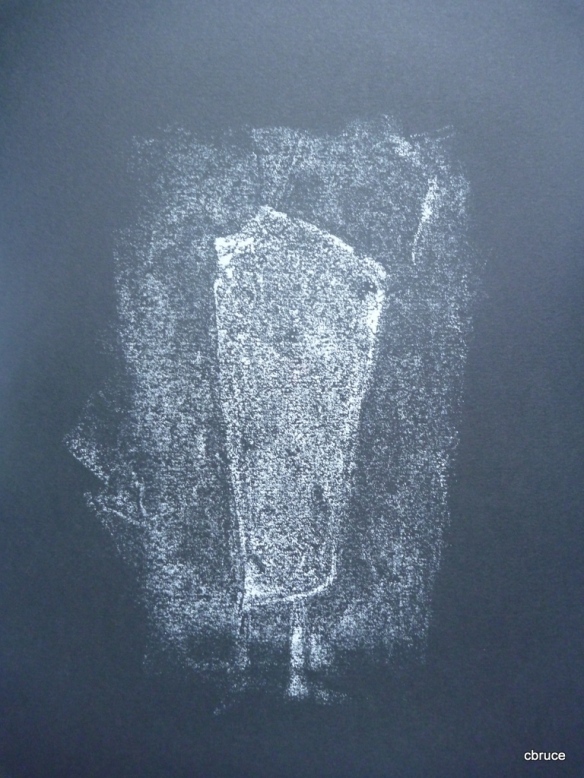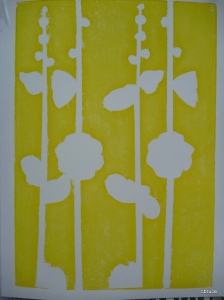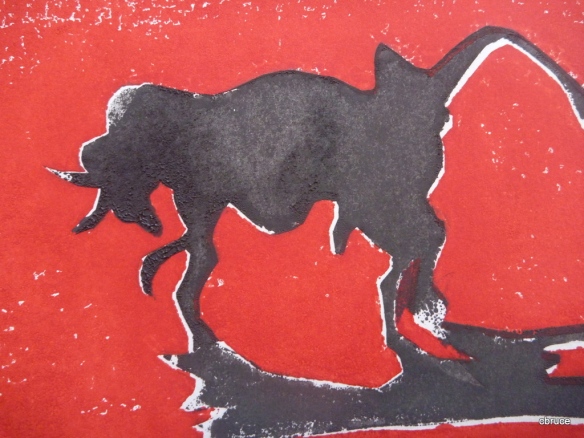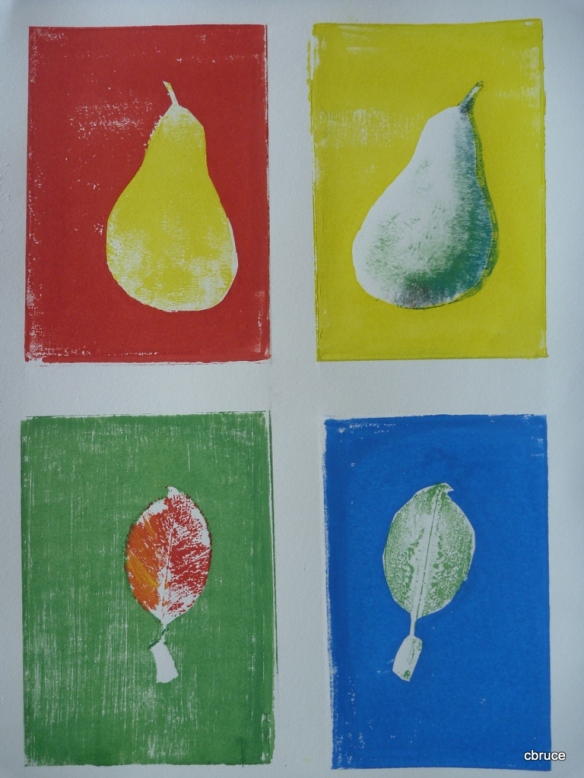Friday
I can’t believe how long it takes to make a print that doesn’t look like very much…
Subject: Spanish Landscape with cypress trees
I used a blurry photo taken through the car window: I like the colours and simple shapes.

blurry photo
Sketched and planned the colours, and the mask, but wasn’t sure how I would use the mask, as I get frustrated by the halo.
Sketch:
I prepared a couple of masks, and mixed the colours, and tried again to use masking tape on the printing paper and printing plate so as to flip the printing paper over and hopefully keep the registration reasonably ok.
Colours: for the sky, I tried to blend dark down into lighter blue by mixing on the roller. This was applied then the positive mask put in place.

graduated colour

rolled onto plate held by masking tape

mask in place
Secondly, I used yellow, which, being more transparent, was going to make green when overlapping part of the blue. This I rolled on, and I decided against using the mask, as the transparency of the ink let me see the outline of the sketch lying under the glass, so I was able to wipe off instead.

yellow layer

wiping off
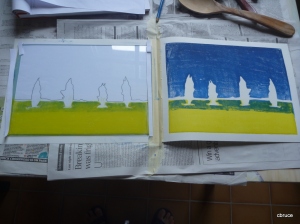
yellow overlapping blue to make green
The next stage was to use a negative mask for the trees. I was fairly confident of getting it placed, but wanted a bit of white highlight on the trees anyway. I placed the upper and lower masks onto the glass, rather than onto the printing paper, as I wanted a bit of misalignment for highlights.

negative mask
This worked quite well, and I like this print. The sky has starry texture, and the bubbles caused by thick paint where it has been wiped off add to the effects. I think the yellow/blue colour mixing has worked well, and there is some gradation in the sky colours, though perhaps not as much as I’d hoped. The highlights work.

final print
Version 2
Just for the sake of experiment, I thought I’d try using the mask differently, inking over it to avoid halo effects.
I started by inking over the positive mask with blue ink. It was hard to get a smooth finish, but I thought I could make a virtue out of a necessity and use the roller to make a textured finish. The problem was getting the mask, which was quite small, with narrow parts, to stick to the glass. I used a little spot of glue stick, which I thought I could roll off with my finger afterwards.

roller texture

yellow, followed by negative masked trees
The next step was the yellow foreground: like last time I did this by rolling and wiping. Next was the trees. I taped the negative masks to the printing paper to try to avoid misalignment. There was still a little though.
I wasn’t too happy with the result, and preferred the first version. The glue hadn’t come off completely, and I cheated by dipping my finger in the ink to fill in the little bits that hadn’t got covered.
I thought I would continue to experiment, and worked on the sky.
I started by cleaning off the ink that was still on the glass after printing the trees, then I removed the negative masks and wiped around the hard edges left by them.

glass
Working with a brush I painted light blue onto the glass, right up to the hard edges of the tree shapes.

I printed this, and it had toned down the texture in the sky, but not enough, so I applied some thicker paint to the top of the glass.


This still wasn’t effective enough, so I decided to try to redo the sky completely, be re-rolling it and then wiping it, using the outlines of the hard edges which were still visible.

That worked quite well, but I still prefer the first version of this picture, as it’s simpler. The second one looks rather overworked.

second version

version 1




